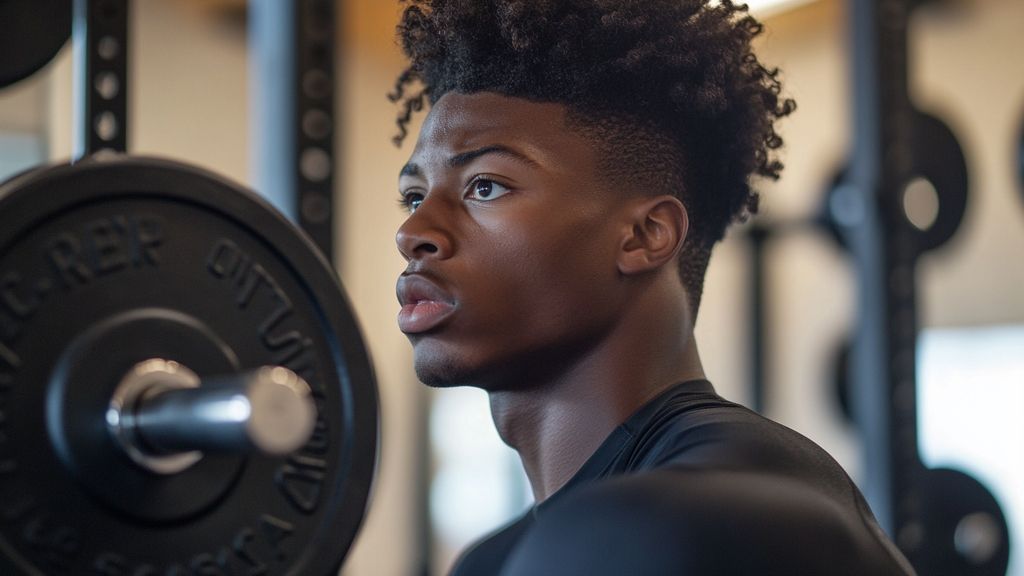As the CrossFit Open approaches, athletes worldwide are gearing up for one of the most defining moments of the season. With countless participants aiming to showcase their skills and improve their performance, understanding the nuances of the Open can mean the difference between a satisfying experience and a frustrating one. This guide is designed to provide comprehensive insights and strategies to help you navigate the Open effectively, whether you’re a seasoned athlete or a newcomer. The focus lies on achieving personal bests while also ensuring that the competition remains enjoyable.
The 2024 CrossFit Open offers a unique challenge, with workouts designed to test not only your physical strength but also your mental fortitude. Specific workouts, like the recent 24.3, are tailored to challenge athletes of all skill levels, and knowing how to approach these challenges is crucial. Understanding pacing, recovery, and workout strategies will significantly enhance your performance. Furthermore, insights from elite CrossFit coaches can provide invaluable tips that might just give you the edge you need.
Understanding the Structure of the CrossFit Open
What is the CrossFit Open?
The CrossFit Open consists of a series of workouts that take place over several weeks, culminating in one of the largest fitness competitions globally. Athletes from all corners of the globe participate, each completing the same workouts designed to test various attributes such as strength, endurance, and skill. The workouts, typically released on a weekly basis, include a range of exercises, allowing for varied and challenging experiences. Each workout is scalable, making it accessible to athletes of all skill levels.
Why is the CrossFit Open Important?
Participating in the CrossFit Open is not just about competition; it also serves as a significant benchmark for individuals to measure their progress over the year. For many, it becomes a motivational driving force pushing athletes to focus on their weaknesses throughout the training months leading up to the event. Furthermore, it fosters a sense of community as athletes share their experiences and support each other. Many CrossFit gyms organize group workouts, creating an atmosphere that makes the event a celebrated moment in the fitness calendar.
Workout Schedule and Format
The structure of the CrossFit Open generally involves a five-week program, with new workouts announced each week. Each workout typically consists of a specific set of movements and repetitions, timed for performance. Following the announcement, athletes have a limited time to complete the workout and submit their scores. It’s crucial to keep track of the score submission process accurately, ensuring that you meet the deadlines to be featured on the leaderboard.
Understanding the layout of these workouts will help you create a training plan that encompasses all necessary aspects, ensuring you are not just participating but also competing passionately. Make sure to familiarize yourself with the scoring system and how to improve your scores effectively.
Training Strategies for the Open

Importance of Proper Training
To excel in the CrossFit Open, having a structured training plan is paramount. Strategies should focus on enhancing both strengths and addressing weaknesses identified throughout the training year. Committing to regular and consistent training sessions helps build the endurance and strength required to tackle demanding workouts. Planning specific periods for high-intensity training can also prepare your body to handle the rigors of the Open workouts effectively.
Building a Supportive Community
Engaging with the CrossFit community can provide inspiration and motivation throughout your journey. Joining group classes at your local gym can offer a supportive environment where you can share experiences and celebrate victories. Participating with peers creates a sense of accountability, pushing you to give your best effort during every training session and the Open itself. Moreover, the insight shared among fellow athletes can help you devise better strategies to tackle challenging workouts effectively.
Practicing Key Movements
Many workouts during the Open will test fundamental CrossFit skills such as the clean, snatch, thruster, and pull-up. Regularly practicing these movements not only helps perfect your technique but also enhances your performance in the Open. Focus on lighter weights during practice to ensure form remains correct before increasing weight. Drilling specific combinations seen in previous Open workouts can help you prepare mentally for the challenges ahead. Setting mini-goals around these foundational movements can also lead to significant performance improvements.
Nutrition Tips to Fuel Your Performance
The Role of Nutrition in CrossFit
Nutrition plays a pivotal role in how well your body performs during the Open. As your intensity increases, so should your nutritional focus. Ensure your meals are rich in protein, healthy fats, and carbohydrates to provide the necessary fuel for workouts. Preparing your meals in advance helps ensure you are fueling your body adequately. Proper hydration is just as crucial; aim to drink plenty of water daily, especially before and after workouts.
Pre-Workout Nutrition
What you eat before a workout greatly influences your performance. A balanced meal containing carbohydrates, protein, and fats two to three hours before a workout will give you a steady layer of energy for tackling challenging Open workouts. For immediate energy, consider a snack with easily digestible carbohydrates about 30 minutes prior. Ideas like a banana, yogurt, or a small protein shake can enhance your performance.
Post-Workout Recovery
The importance of post-workout nutrition cannot be understated. After completing a workout, your muscles need nutrients to recover effectively. Consuming a protein-rich meal or snack within 30 minutes post-exercise will set the foundation for muscle repair and replenish energy stores, preparing you for subsequent training sessions. Including BCAAs (Branched-Chain Amino Acids) in your post-workout routine can also be beneficial in reducing muscle fatigue and aiding recovery.
Pacing Strategies During the Open

Understanding Pacing in Workouts
Pacing is crucial for performing well in the CrossFit Open. Knowing when to push hard and when to conserve energy can make or break your performance. Pay careful attention to your breathing and heart rate; understanding your body’s signals can guide your pacing decisions. During the earlier rounds of workouts, resist the urge to go all out as this can lead to early fatigue, affecting performance in later rounds.
Masters of Pacing
Many experienced athletes emphasize starting at a pace that allows you to complete the workout without hitting the wall. This approach will enable you to maintain a sustainable effort level throughout the workout. Take mental notes of how you felt during past workouts to develop a solid understanding of your ideal pacing strategy. This knowledge will empower you to gauge effort levels effectively during the Open.
Transitioning Between Movements
Efficient transitions between movements can save valuable time during workouts. Practice efficient transitions during your training sessions, focusing on minimizing downtime between movements. For instance, moving your body into position for the next lift or striving for smooth changeovers between different types of exercises can keep your intensity levels high. Strategies like setting up your equipment in advance or mapping out your workout plan can also help eliminate unnecessary delays.
Mental Preparation for the Open
The Psychology of Competition
The mental aspect of the CrossFit Open cannot be overlooked. Preparing your mind for the challenge is essential to performing at your best. Cultivating a positive mindset plays a critical role in achieving your goals. Start incorporating visualization techniques, where you envision successfully completing workouts, prior to event day.
Testing Your Limits
Training should also focus on building mental resilience. Performing workouts that challenge your limits will prepare your mind for the competitive pressure. Simulating Open conditions during training, from time constraints to competitive environments, can help acclimate your mentality to the demand of the workouts. Regularly stepping outside your comfort zone will foster both confidence and courage when facing actual competition.
Breathing Techniques to Manage Stress
Learning to manage stress through breathing techniques is an efficient way to maintain calmness during workouts. Incorporate deep breathing exercises into your warm-up routine to center your focus and mitigate anxiety. Taking a moment to breathe and compose yourself before attempting a heavy lift or challenging workout can significantly impact performance.
Dealing with Setbacks and Injuries

Recognizing Signs of Overtraining
Despite the best training regimens, setbacks can occur, particularly overtraining or injuries. Being aware of your body’s signals is essential in maintaining performance levels. Symptoms such as prolonged fatigue, mood swings, and persistent muscle soreness indicate that you may need to adjust your training volume and intensity. Seeking advice from coaches can provide new perspectives on managing your routines effectively.
Strategies for Injury Prevention
Injury prevention is crucial for sustained performance during the Open. Prioritize proper warm-ups and cool-downs during each workout to enhance your body’s range of motion and recovery. Incorporating mobility drills into your daily routine can also guard against injury, ensuring that your joints and muscles are functioning effectively.
Rehabilitation and Return to Training
If an injury does occur, focus on rehabilitation to restore strength and function before returning to training. Design a gradual plan that integrates light workouts and specific rehabilitation exercises to regain fitness levels safely. Consulting with health professionals can ensure a smooth transition back into rigorous training, avoiding the risk of re-injury.
Staying Motivated Throughout the Open
Setting SMART Goals
Maintaining motivation during the CrossFit Open is crucial for success. Setting SMART (Specific, Measurable, Achievable, Relevant, Time-bound) goals not only aids in maintaining focus but also enables you to track your progress effectively. Break your goals into smaller components to make them seem more manageable, and celebrate each achievement along the way.
Celebrating Small Victories
Acknowledging and celebrating small successes is essential in nurturing a positive outlook. Progress in fitness can be incremental, and recognizing each achievement, no matter how small, can help sustain motivation. Take the time to reflect on improvements from previous workouts and appreciate how far you have come in your fitness journey.
Building a Routine
Creating a routine before and during the Open can solidify your commitment to performance. Consider planning out your training schedule, nutrition, and recovery tactics in advance. Establishing a routine reinforces the habit of training consistently, which can greatly enhance your overall performance.
